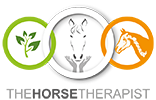Guest blog written by Marie Fitzgerald, MF Equine Bodywork
Complex Vertebral Malformation
Complex Vertebral Malformation was first found in Holstein dairy calves late last century. They were born with a genetic condition. They had a very short lifespan of 2 days with many of them aborted before full term. There were congenital malformations of the vertebrae and ribs at the cervicothoracic junction (where the neck attaches to the trunk of the body). It became a problem worldwide because of Artificial Insemination.
Equine Complex Vertebral Malformation was discovered by Sharon May-Davis who observed that of 123 horses dissected a number of them had malformation of the sixth and seventh cervical vertebrae. It was first known as the congenital malformation of the 6th and 7th Cervical Vertebrae in horses but the name was changed in 2019, as more research was conducted. It is now seen to affect a lot more than just the neck, it also affects the first and second rib, the sternum, the thoracic and the lumbar vertebrae. It also affects muscles and nerves in this area.
Horses with ECVM can have a range of symptoms which makes it difficult to diagnose.
Symptoms include:
-
Contact problems
-
Dental problems
-
Sensitivity to palpation
-
Imbalance on the feet
-
Asymmetry
-
Hormonal problems
-
Less forward / willing to work
-
Not willing or difficulty with canter
-
Hitting / shaking the head
-
Looking at the shoulder / biting (himself)
-
General resistance
-
Rebellious in behavior
-
Unpredictability
-
Sudden startled behavior
-
Often worsens as the horse gets older
-
Difficult or dangerous to ride
-
Rearing
-
Stumbling
-
Downhill and uneven ground ataxia
-
Head/neck tilt
-
Inconsistent forelimb lameness
Diagnosis
X-ray is the quickest and easiest way to diagnose ECVM. CT scans are also excellent as they can show more detail but the cost can be a barrier for some owners.
Management
Every horse is different so management should be matched to the horse's capabilities and needs. ASYMMETRY and INSTABILITY are the main factors to consider with every case of ECVM but after that the prognosis differs from horse to horse. Some things that may help with the management of ECVM include:
-
Passive physio (browsing)
-
Stability training
-
Proprioception training
-
Good hoof care with short intervals
-
Therapy / bodywork
-
Regular dentistry treatments
-
Removing other stressors (think of nutrition, isolation, too heavy training)
-
In-hand training before riding the horse
-
Adapted and customized training schedules
So far Sharon has seen ECVM in at least 9 different breeds and their derivatives in 11 different countries. She has seen a huge increase in its prevalence over the last 20 years. At the moment she sees it in 4 out of 10 thoroughbreds she dissects around the world while 6 out of 10 she dissected in Japan had the malformation. She has travelled around the world to natural history museums to look at the bones of horses but hasn’t once found ECVM pre-domestication. It has also never been found in the Dutch Konik horses or other wild isolated equine populations.
Variations
ECVM has many different variations but it will always affect C6 so that is the first place to look for a diagnosis.
50% of the horses with C6 malformation also have malformed C7.
These vertebrae can be affected on one or both sides.
Unilateral left 70%
Bilateral 20%
Unilateral right 10%
Of the horses with both C6 and C7 affected, 50% also have ribs affected.
So if we have 10 horses. 4 of the 10 will have ECVM affecting C6. 2 of those 4 will also have C7 affected and 1 will have rib malformations.
So 1 in 10 horses will have C6, C7 and rib malformations.
It has also been seen to affect the curvature of the sternum which will have a huge impact on the balance of the horse.
Muscles are also affected as they can’t attach where they usually would at C6, C7 or the first rib. The Vagus and phrenic nerves also altered.
“With asymmetric form comes asymmetric function”
Genetic?
It is believed there is a genetic component because they found it in the Holstein cattle and it seems to be very similar in horses. It is also feared that it may be a recessive gene meaning you can have a carrier who is not affected themselves but can pass it on to their offspring.
Sharon has dissected several stillborn foals to investigate ECVM and it has been noted that many foals with ECVM were aborted in the last 6 weeks of the 3rd trimester.
More research is definitely needed on this subject but it has been suggested that we make X-rays of C6 a routine part of pre-purchase vetting. It is also thought that it may be a good idea to check breeding stock for the malformation.
You can find more information on www.ecvmallbreeds.com or Wendy’s webinar with Sharon May-Davis on YouTube is also fantastic.
